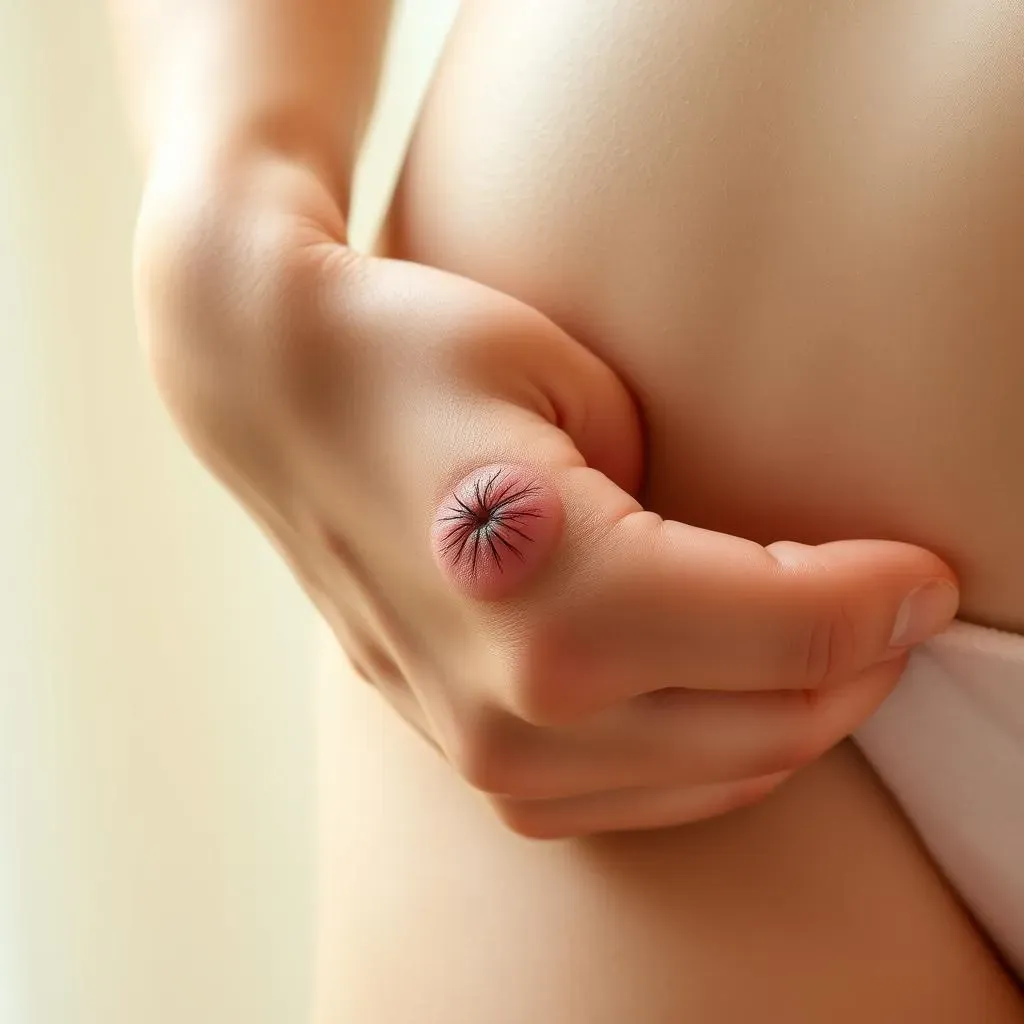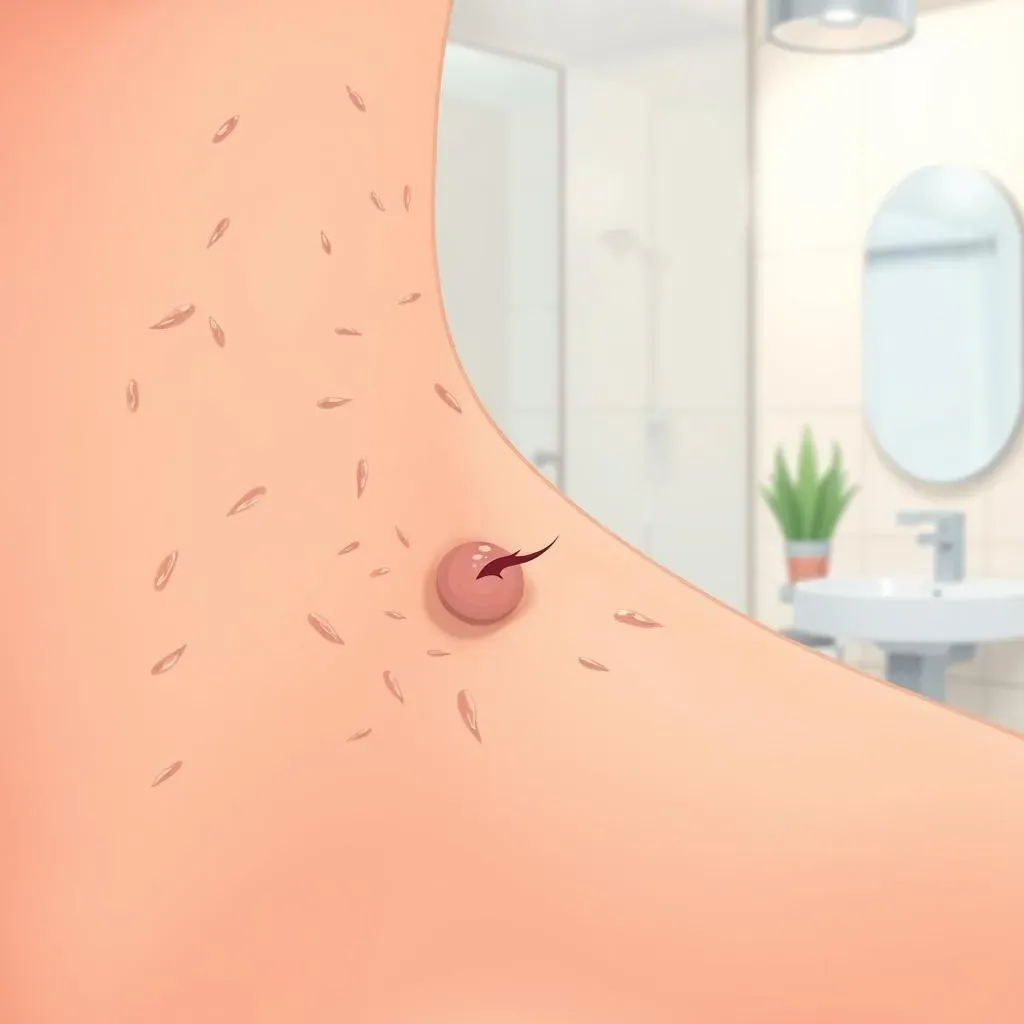Table of Contents
Ingrown hairs can be a frustrating and painful problem, especially when they become thick and stubborn. Thick ingrown hair removal requires a comprehensive approach that addresses the root causes, symptoms, and effective treatments. In this article, we will delve into the world of thick ingrown hair, exploring the causes and symptoms, as well as various removal methods, including home remedies and professional treatments like laser hair removal. We will also discuss prevention techniques and maintenance tips to help you avoid future occurrences. Whether you're struggling with ingrown hairs or looking for ways to prevent them, this guide will provide you with the knowledge and tools you need to achieve smooth, healthy skin. From the comfort of your own home to professional solutions like those offered by hairawaybylaser.com, we'll cover it all. So, let's get started on the journey to understanding and mastering thick ingrown hair removal.
Understanding Thick Ingrown Hair: Causes and Symptoms

Understanding Thick Ingrown Hair: Causes and Symptoms
What are Ingrown Hairs?
Ingrown hairs occur when hair curls back into the skin instead of growing outwards, leading to inflammation, redness, and sometimes infection. Thick ingrown hairs are particularly problematic because they can be more difficult to remove and may cause more severe symptoms. These ingrown hairs can appear anywhere on the body where hair grows, but they are most common in areas where the hair is thicker and coarser, such as the bikini line, underarms, and chin.
Understanding the causes of ingrown hairs is crucial in preventing and treating them. Some of the most common causes include:
- Improper shaving techniques, such as shaving too closely or using a dull razor
- Tight clothing that rubs against the skin and causes friction
- Curly or coarse hair that is more prone to curling back into the skin
- Poor skin care routines that don't include exfoliation and moisturizing
Symptoms of Ingrown Hairs
Symptoms of ingrown hairs can range from mild to severe. Some common symptoms include:
Symptom | Description |
|---|---|
Redness and inflammation | The affected area becomes red, swollen, and painful to the touch |
Pustules or bumps | Small bumps or pustules may form as the body tries to fight the ingrown hair |
Itching and burning | The area may itch or burn, especially if the ingrown hair becomes infected |
If left untreated, ingrown hairs can lead to more serious complications, such as scarring, infection, and ingrown hair cysts. It's essential to address ingrown hairs as soon as they appear to prevent these complications.
Risk Factors for Ingrown Hairs
Certain individuals are more prone to developing ingrown hairs due to their hair type, skin type, or lifestyle. Some of the risk factors include:
- Having curly or coarse hair
- Being African American or having darker skin, as the hair can curl back into the skin more easily
- Shaving frequently or using improper shaving techniques
- Wearing tight clothing that causes friction on the skin
By understanding these risk factors, individuals can take proactive steps to prevent ingrown hairs and reduce their occurrence.
Thick Ingrown Hair Removal Methods: Home Remedies and Professional Treatments

Thick Ingrown Hair Removal Methods: Home Remedies and Professional Treatments
Removing thick ingrown hairs requires a combination of patience, the right techniques, and sometimes professional help. Depending on the severity of the ingrown hair, there are various methods to consider, ranging from home remedies to professional treatments like those offered by hairawaybylaser.com. Here are some of the most effective methods for thick ingrown hair removal:
Home Remedies for Thick Ingrown Hair Removal
Before seeking professional help, many people try to remove ingrown hairs at home. Here are some effective home remedies:
- Exfoliation: Gently exfoliating the skin with a warm washcloth or a gentle scrub can help release the ingrown hair.
- Warm Compresses: Applying a warm compress to the affected area can help bring the ingrown hair to the surface, making it easier to remove.
- Tea Tree Oil: This natural antiseptic can help prevent infection and promote healing.
- Depilatory Creams: Chemical-based creams can dissolve the hair, making it easier to remove.
While these home remedies can be effective, they may not be strong enough for thicker ingrown hairs. In such cases, professional treatments may be necessary.
Professional Treatments for Thick Ingrown Hair Removal
For more severe cases of ingrown hairs, professional treatments are available. These include:
Treatment | Description | Effectiveness |
|---|---|---|
Waxing | A temporary solution that removes hair from the root but can cause ingrown hairs to recur. | Effective for short-term removal but may not prevent future ingrown hairs. |
Threading | A technique that removes hair from the root but can cause redness and ingrown hairs. | Similar to waxing, it provides temporary results and may not address the underlying issue. |
Laser Hair Removal | A long-term solution that uses laser technology to target and remove hair follicles. | Highly effective for permanent hair reduction and prevention of ingrown hairs. |
Laser hair removal, in particular, has become a popular option for those seeking a more permanent solution. By targeting the hair follicle, laser hair removal can significantly reduce the occurrence of ingrown hairs. Companies like hairawaybylaser.com offer this treatment, providing a safe and effective way to achieve smooth, hair-free skin.
Preventing Thick Ingrown Hair: Tips for Maintenance and Aftercare

Preventing Thick Ingrown Hair: Tips for Maintenance and Aftercare
Understanding the Importance of Prevention
Another key factor in preventing ingrown hairs is proper shaving techniques. Shaving too closely or using a dull razor can cause hairs to become trapped under the skin. Using a sharp razor and shaving in the direction of hair growth can help minimize the risk of ingrown hairs. Additionally, wearing loose, breathable clothing can reduce friction and irritation, which are common causes of ingrown hairs.
Prevention Tip | Description | Benefits |
|---|---|---|
Exfoliate regularly | Remove dead skin cells to prevent hair trapping | Reduces ingrown hairs, improves skin texture |
Shave in the direction of hair growth | Avoid cutting hairs too short, which can cause them to curl back into the skin | Minimizes ingrown hairs, reduces razor burn |
Wear loose, breathable clothing | Reduce friction and irritation on the skin | Decreases risk of ingrown hairs, promotes comfort |
Maintenance and Aftercare for Ingrown Hair-Prone Areas
After removing an ingrown hair, it's essential to practice good aftercare to promote healing and prevent infection. Keeping the affected area clean and applying an antiseptic cream can help prevent infection. Additionally, moisturizing the skin regularly can help keep it hydrated and reduce the risk of dryness, which can contribute to ingrown hairs.
For areas prone to ingrown hairs, such as the bikini line or underarms, it's crucial to maintain good hygiene and avoid sharing personal items like razors or towels. Sharing these items can spread bacteria and increase the risk of infection. Furthermore, avoiding tight clothing and wearing loose, breathable fabrics can help reduce friction and irritation.
- Keep the affected area clean and dry
- Apply an antiseptic cream to prevent infection
- Moisturize regularly to keep the skin hydrated
- Avoid sharing personal items to prevent bacterial spread
- Wear loose, breathable clothing to reduce friction
Professional Assistance for Ingrown Hair Prevention
While home remedies and prevention tips can be effective, some individuals may require professional assistance to prevent ingrown hairs. Laser hair removal, offered by companies like hairawaybylaser.com, provides a long-term solution to reducing hair growth and preventing ingrown hairs. This treatment is especially beneficial for those with thick or curly hair, as it targets the hair follicle and reduces the risk of ingrown hairs.
Consulting with a dermatologist or skincare professional can also provide personalized advice and treatment options for ingrown hair prevention. They can recommend customized skincare routines, prescribe medications if necessary, and offer guidance on proper shaving techniques. By combining professional treatments with good hygiene and skin care practices, individuals can effectively prevent thick ingrown hairs and maintain healthy, smooth skin.
Treating Infected Thick Ingrown Hair: When to Seek Medical Attention

Treating Infected Thick Ingrown Hair: When to Seek Medical Attention
Identifying Infected Ingrown Hairs
Infected ingrown hairs can be painful and lead to more serious complications if left untreated. It's essential to recognize the signs of infection to seek medical attention promptly. Some common symptoms of infected ingrown hairs include increased redness, swelling, and pus around the affected area. You may also experience increased pain, itching, or burning sensations. If you notice any of these symptoms, it's crucial to seek medical attention to prevent further complications.
In some cases, infected ingrown hairs can lead to the formation of cysts. Ingrown hair cysts are pockets of fluid that form around the infected hair. These cysts can become severely inflamed and may require drainage or surgical removal. If you suspect you have an ingrown hair cyst, it's vital to consult a healthcare professional for proper diagnosis and treatment.
Symptom | Description | When to Seek Medical Attention |
|---|---|---|
Increased Redness and Swelling | The affected area becomes significantly redder and swollen | Immediately, as it may indicate the start of an infection |
Pus or Discharge | Yellowish or greenish fluid drains from the affected area | Urgently, as it's a clear sign of infection |
Increased Pain | Pain increases, and the area becomes sensitive to touch | Promptly, as increased pain can indicate worsening infection |
Treatments for Infected Ingrown Hairs
Treatments for infected ingrown hairs depend on the severity of the infection. For mild cases, your healthcare provider may prescribe antibiotics to clear the infection. In more severe cases, they may need to drain the cyst or remove the infected hair surgically.
Antibiotics are commonly used to treat infected ingrown hairs. Topical antibiotics, such as neomycin or bacitracin, can be applied directly to the affected area. For more severe infections, oral antibiotics like cephalexin may be prescribed.
- Topical antibiotics for mild infections
- Oral antibiotics for more severe infections
- Surgical drainage or removal of the infected hair
Self-Care for Infected Ingrown Hairs
While medical treatment is necessary for infected ingrown hairs, there are steps you can take to aid in the healing process. Applying warm compresses to the affected area can help bring the infection to the surface, making it easier for your body to fight it off. Keeping the area clean and dry is also essential to prevent the spread of infection.
Avoid picking at or popping the ingrown hair, as this can push the infection deeper into the skin and lead to further complications. Instead, focus on promoting healing and preventing infection with proper wound care.
Advanced Thick Ingrown Hair Removal Techniques: Laser Hair Removal and More

Advanced Thick Ingrown Hair Removal Techniques: Laser Hair Removal and More
Laser Hair Removal for Thick Ingrown Hair
Laser hair removal has become a popular solution for those seeking a more permanent fix for thick ingrown hairs. This advanced technique uses a laser to target and destroy hair follicles, reducing the growth of unwanted hair. By minimizing hair growth, laser hair removal can significantly decrease the occurrence of ingrown hairs. Companies like hairawaybylaser.com specialize in this treatment, providing a safe and effective way to achieve smooth, hair-free skin.
The process of laser hair removal involves a series of sessions, each targeting the hair follicles at different growth stages. The laser emits a beam of light that is absorbed by the pigment in the hair, damaging the follicle and preventing future growth. While it's not a one-time fix, laser hair removal can lead to permanent hair reduction after several sessions.
Benefits | Advantages | Results |
|---|---|---|
Permanent Hair Reduction | Minimizes ingrown hairs, reduces need for shaving | Smooth, hair-free skin after several sessions |
Targets Thick and Coarse Hair | Effective for areas prone to ingrown hairs | Significant reduction in ingrown hairs |
Long-Term Solution | Reduces dependence on temporary hair removal methods | Cost-effective in the long run |
Other Advanced Ingrown Hair Removal Techniques
Beyond laser hair removal, there are other advanced techniques for removing thick ingrown hairs. These include electrolysis, a permanent hair removal method that uses a fine needle to destroy the hair follicle, and intense pulsed light (IPL) therapy, which uses broadband light to target hair follicles. While these methods can be effective, they may not be as popular as laser hair removal due to their higher cost and potential side effects.
- Electrolysis: Permanent hair removal through follicle destruction
- Intense Pulsed Light (IPL) Therapy: Broadband light targets hair follicles
- Depilatory Creams: Chemical-based hair removal
These advanced techniques offer alternatives to laser hair removal, each with its own set of benefits and drawbacks. It's essential to consult with a professional to determine the best treatment option for your specific needs and skin type.
Conclusion: Achieving Smooth Skin with Effective Thick Ingrown Hair Removal
Thick ingrown hair removal requires patience, persistence, and the right approach. By understanding the causes and symptoms of ingrown hairs, exploring various removal methods, and incorporating prevention techniques into your daily routine, you can say goodbye to the discomfort and embarrassment of ingrown hairs. Whether you opt for home remedies or professional treatments like laser hair removal, remember that maintaining good hygiene and taking proactive steps towards hair care is key to achieving smooth, healthy skin. With the tips and insights provided in this article, you're well on your way to overcoming thick ingrown hair and enjoying the confidence that comes with it. For long-term solutions, consider consulting professionals, such as those at hairawaybylaser.com, to explore permanent hair removal options.
